New Windows on Her World
Time to see clearly
By Debra Simon
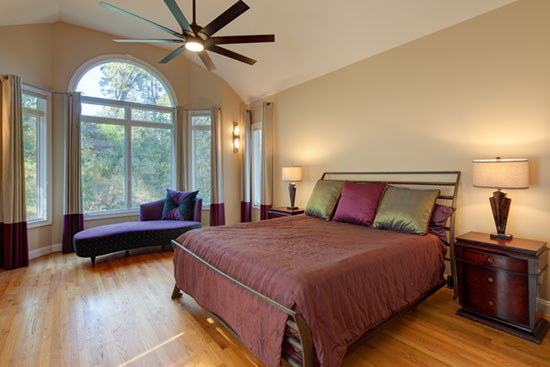
After
What did you do during the Great Isolation?
Learn a language? Lose 20 pounds...or gain 30? Stream home-makeover shows and, inspired by them, indulge in a little DIY?
Take the case of Jenny Miller. Stuck working from her Triangle house during the COVID-19 pandemic, Jenny took on multiple do-it-yourself projects, including painting rooms, refinishing furniture and hanging drapes.
But the 40-year-old techie could see clearly that window treatments don't do the trick when it's the windows themselves that need change. More than a year into the global outbreak, Jenny determined to embark on her pièce de resistance: Replacing the windows.
In this classic home, the windows had always been a major problem. Some wouldn't open, others were broken, still others suffered from water and air leaks. Jenny was worried about warping, cracking and condensation.
"I knew this was no do-it-yourself project," says Jenny. "But I'd had some bad experiences with window replacement in the past, so I was reluctant to get started this time. Finally, I resolved to use my research skills to get the job done and done well."
Her first task was to choose a brand of window from a wealth of possibilities. Windsor Windows & Doors, boasting a production facility in Monroe, N.C., got the local vote. And, Jenny found, its windows have proven standards for energy efficiency and durability.
Windsor is an Energy Star partner with products independently tested, certified and labeled (See "Windows 101," below) – important factors for this environmentally-conscious homeowner.
Jenny's house presented several challenges, including unusually shaped windows, so she was especially interested in a breadth of offerings and ease of conducting business.
"I was impressed by the company's quality and innovation, Jenny reports. "And then everyone was so great to deal with."
Reviews and references checked, decision made, company selected.
Windsor manufactures four product lines, including Pinnacle, which are wood windows and patio doors. Jenny selected Pinnacle Clad White Casements.
"The style's fantastic for my Craftsman house because the windows look great and I get maximum light and excellent ventilation. Plus, they're a cinch to clean," Jenny notes.
Next, she set her sights on identifying the company to procure and install the windows.
Family-owned Talbert Building Supply, with four locations including Durham and Roxboro, stocks and special orders a variety of high-grade merchandise from leading manufacturers, including Windsor.
Although a lot of Talbert's work is done with custom home builders, the dealer's prices are competitive, Jenny discovered, and its experts in the premium window category could easily fulfill her vision.
Reviews and references checked, decision made, company selected.
At Jenny's house, the Talbert's team precisely measured the old units so the replacements wouldn't disturb interior trim or drywall. The exterior of the home surprised with a more difficult issue: Workers had to remove some of the original siding to put in the windows. Then, of course, they replaced the siding. Jenny agreed it was well worth it.
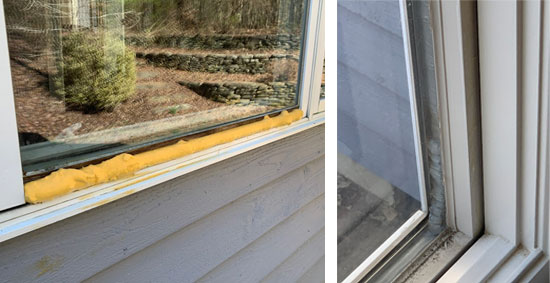
Before
The window installation took one and a half days; the siding took another one and a half days. Throughout the process, the Talbert's team kept everything running smoothly and the space clean and organized.
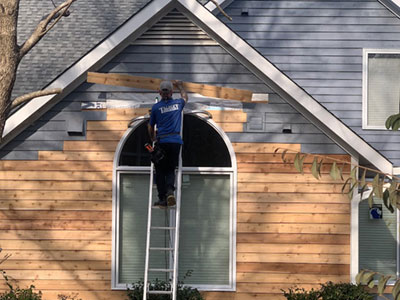
During
"It turns out that replacing windows is delicate work," Jenny says.
The result?
"Magical," Jenny proclaims, noting that she was happy not only with the outcome but with the professionalism of both companies as well as the speed and accuracy of their work. Timelines, warranties, products and quality were as promised.
"Now," Jenny says, "I can look out my beautiful windows and have a sparkling vision: My next project will be turning this mess of a backyard into an amazing outdoor living space."
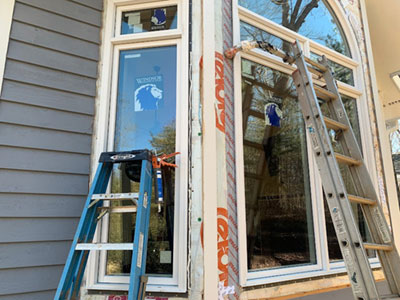
During
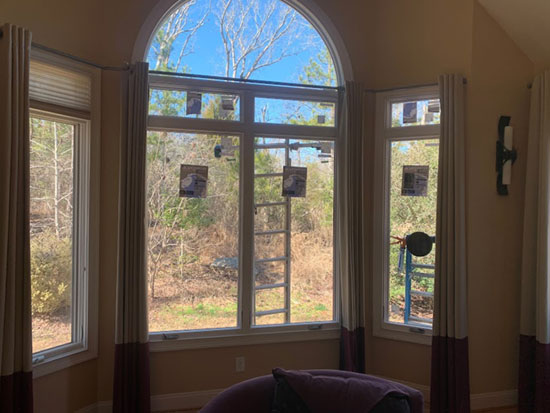
During
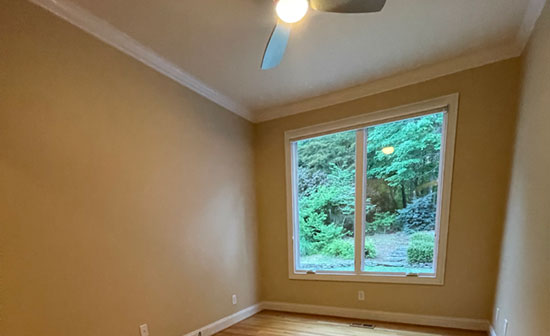
After
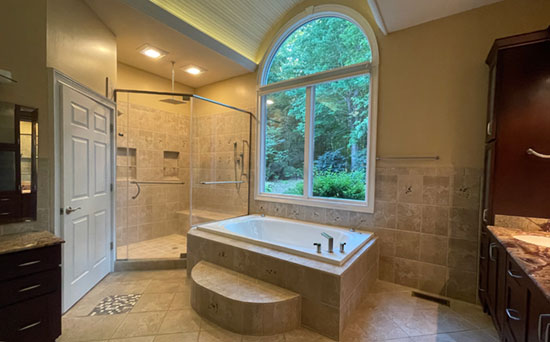
After
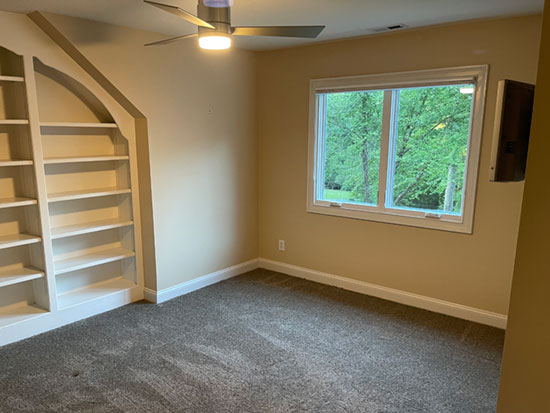
After
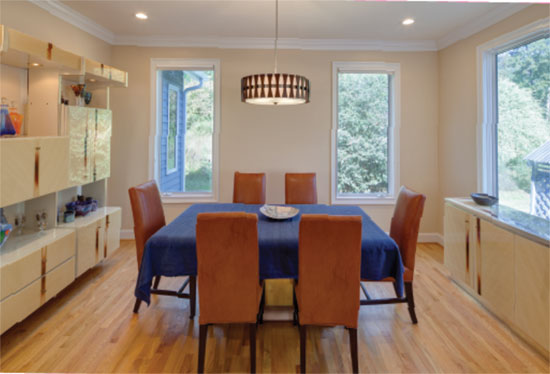
After
Windows 101
Heat gain and loss through windows are responsible for 25 to 30 percent of residential heating and cooling energy use, so energy-efficient windows are an important consideration, notes the U.S. Department of Energy.
If you're selecting windows to replace existing ones, it's important to choose the most efficient versions you can afford that work best in your climate, the department says.
Here's more:
Selection
You'll have to make several decisions about the type of windows you purchase and replacements you'll make.
Perhaps you can replace the windows in their existing frame; discuss this with your window retailer and installer to find out if it'll work for you.
You'll also need to decide what features you want, including:
* Frame types
* Glazing type
* Gas fills and spacers
* Operation types
In addition to choosing the window type, you'll also need to consider design, energy use and labeling, warranties, and proper installation.
Look for the Energy Star label when buying new windows. Then review ratings on the energy performance label from the National Fenestration Rating Council (NFRC) to find the most efficient windows for your needs.
NFRC ratings are included on all Energy Star-certified windows and provide a reliable way to determine a window's energy properties and compare products. Learn about energy performance ratings to understand how to read the labels and energy-use information.
The Efficient Windows Collaborative offers a selection process: Selection process for replacement windows
Then use the selection tools for replacement windows to compare options based on your climate and home design.
Tips:
- Look for the Energy Star and NFRC labels.
- In warmer climates, select windows with coatings to reduce heat gain.
- Look for a low solar heat gain coefficient (SHGC). SHGC is a measure of solar radiation admitted through a window. Low SHGCs reduce heat gain in warm climates.
- Select windows in which both the U-factor, which measures insulation properties, and SHGCs are low; this maximizes energy savings in temperate climates.
- Look for whole-unit rather than center-of-glass U-factors and SHGCs. Whole-unit numbers more accurately reflect the energy performance of the entire product.
Learn more about energy performance ratings for windows.
Installation
Even the most energy-efficient window must be properly installed to ensure you get what you pay for. Have your windows inserted by trained professionals according to manufacturer's instructions; otherwise, your warranty may be void.
Window installation varies depending on the type of window, the construction of the house (examples: wood, masonry), the exterior cladding (examples: stucco, brick) and the type (if any) of weather-restrictive barrier.
To perform correctly, windows, flashing and air sealing should all be installed according to the manufacturer's recommendations.
The Building America Solution Center offers guidance on complete window and frame replacement. Consult this guide with your window professional to ensure proper installation.
For more information, click on: Update or Replace Windows | Department of Energy